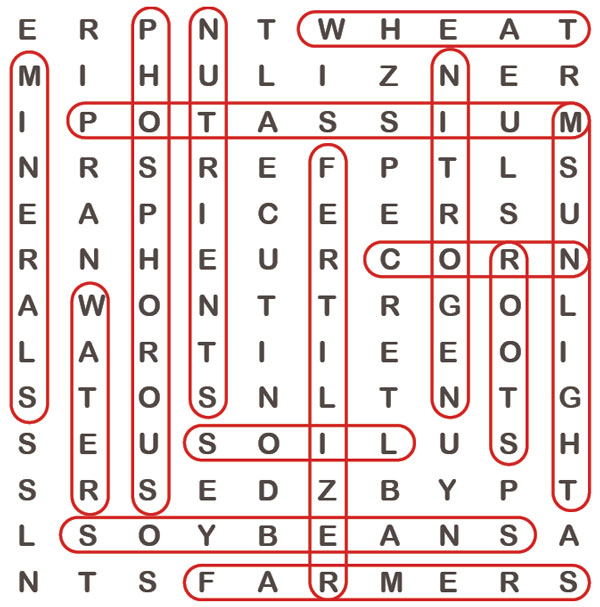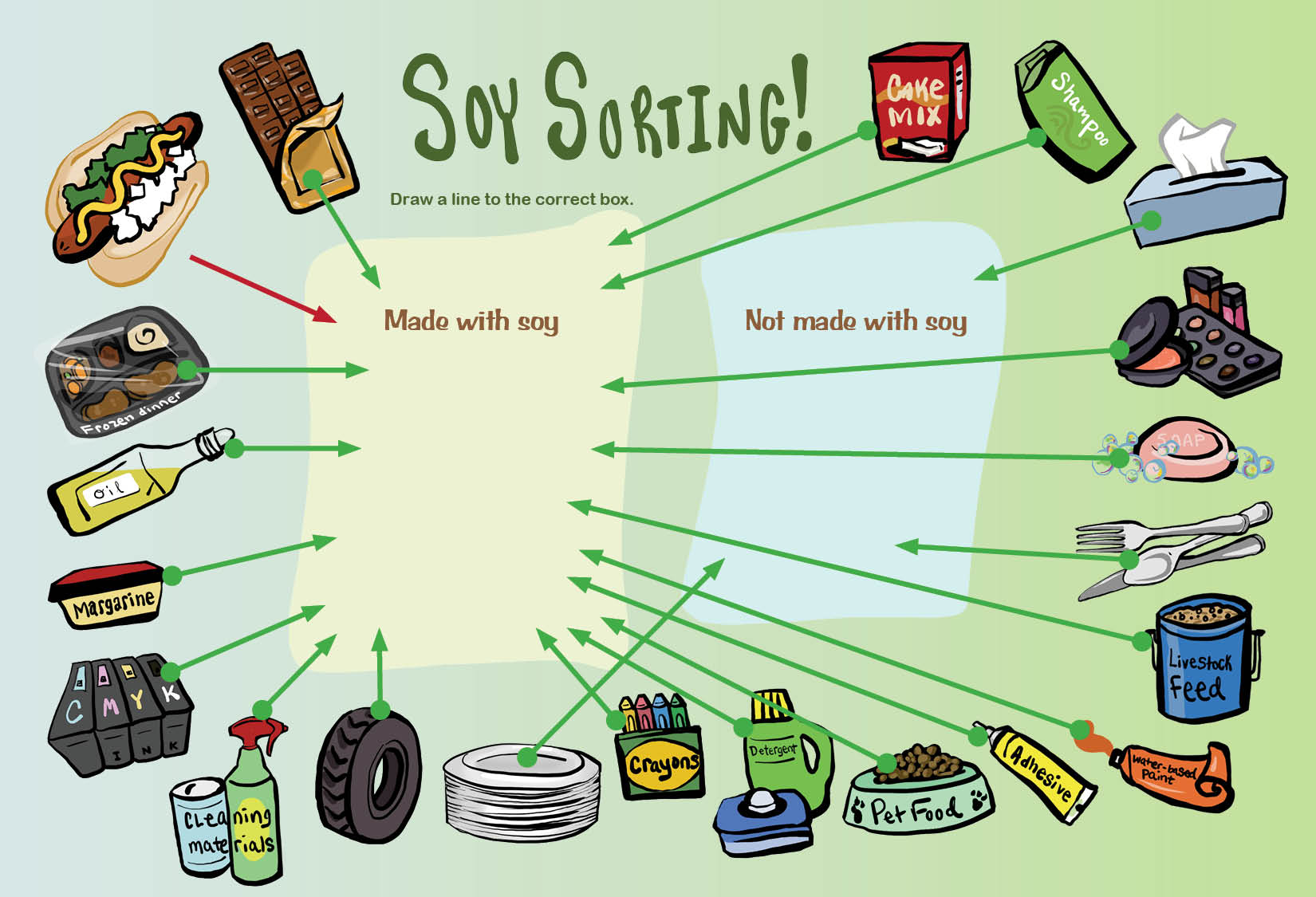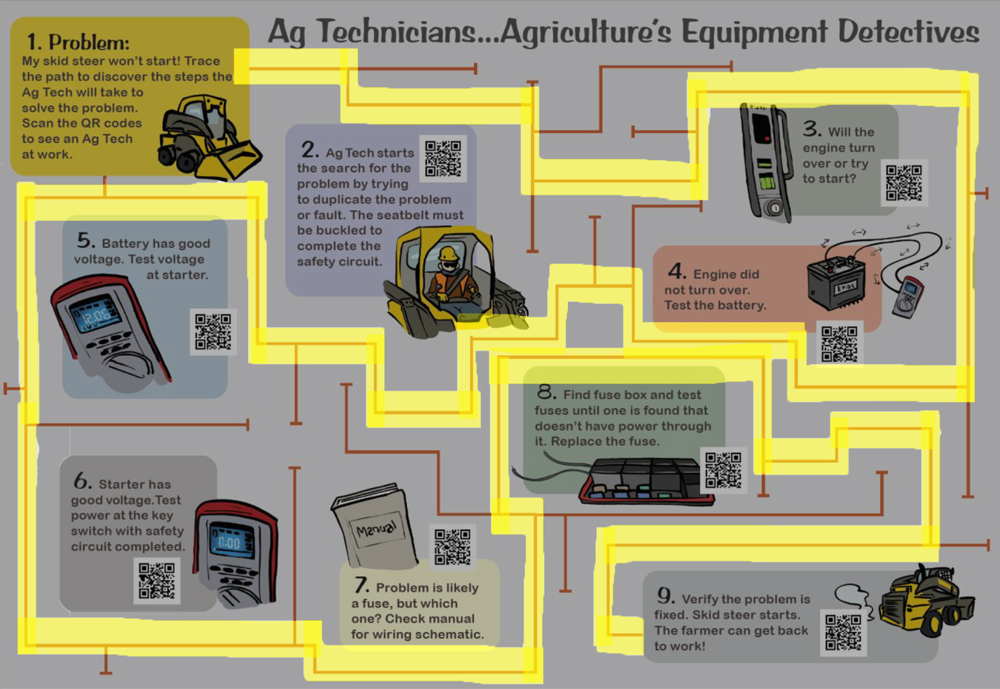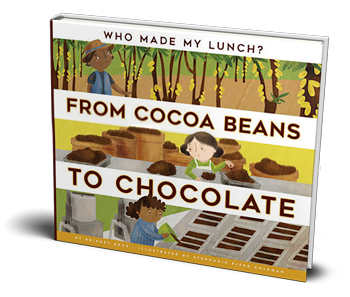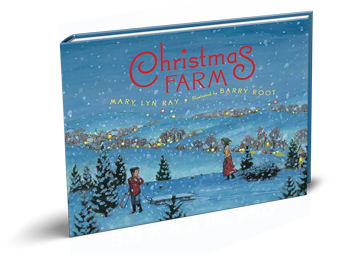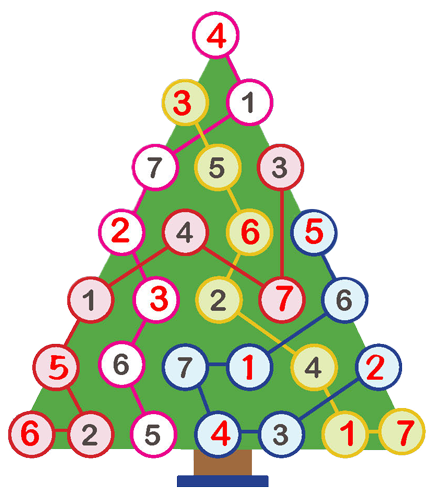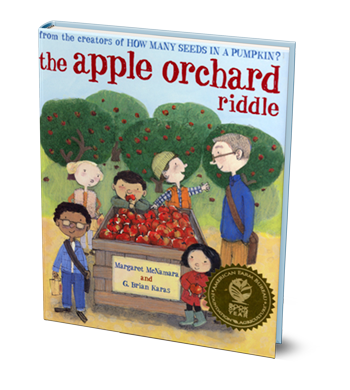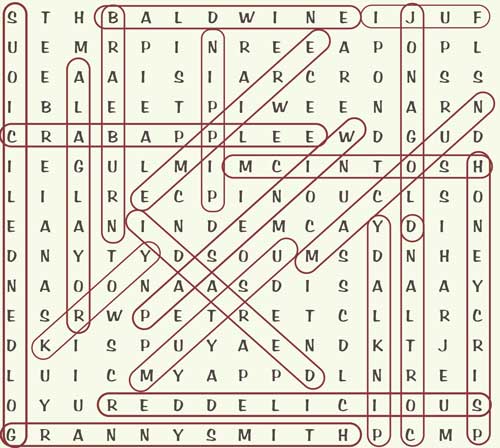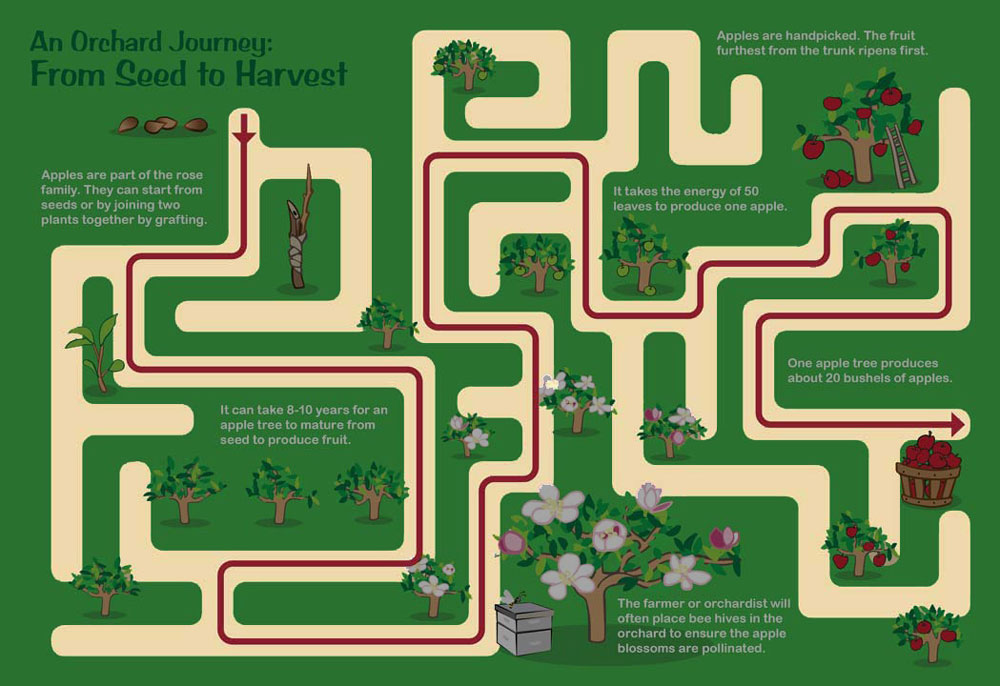Positively 4 Kids
Positively 4 Kids! or P4K! is a children’s insert that was developed by Pennsylvania Farm Bureau’s Positively Pennsylvania magazine.
You can download the one-page activity pdfs by clicking on the download insert links below to learn about different agricultural topics.
After completing the activities you can check back here for the answers.
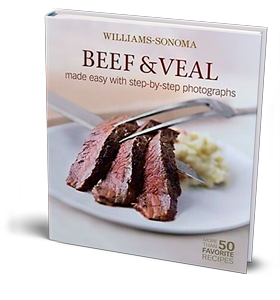
Book: Beef & Veal
Sponsored by Pennsylvania Farm Bureau
By Denis Kelly
Beautifully prepared beef — elegant Bacon-Wrapped Filets Mignons, tender Herb-Rubbed Veal Loin, old-fashioned Pot-Roast — can be the showpiece of any meal. The idea of making such well-known dishes intimidates many cooks, however. But you will soon master these classic beef and veal recipes and many more with this book.
Activity Answers
Seek and Find
Find the bolded words throughout this issue in the word search. Use the letters left over to discover what formual-fed means.
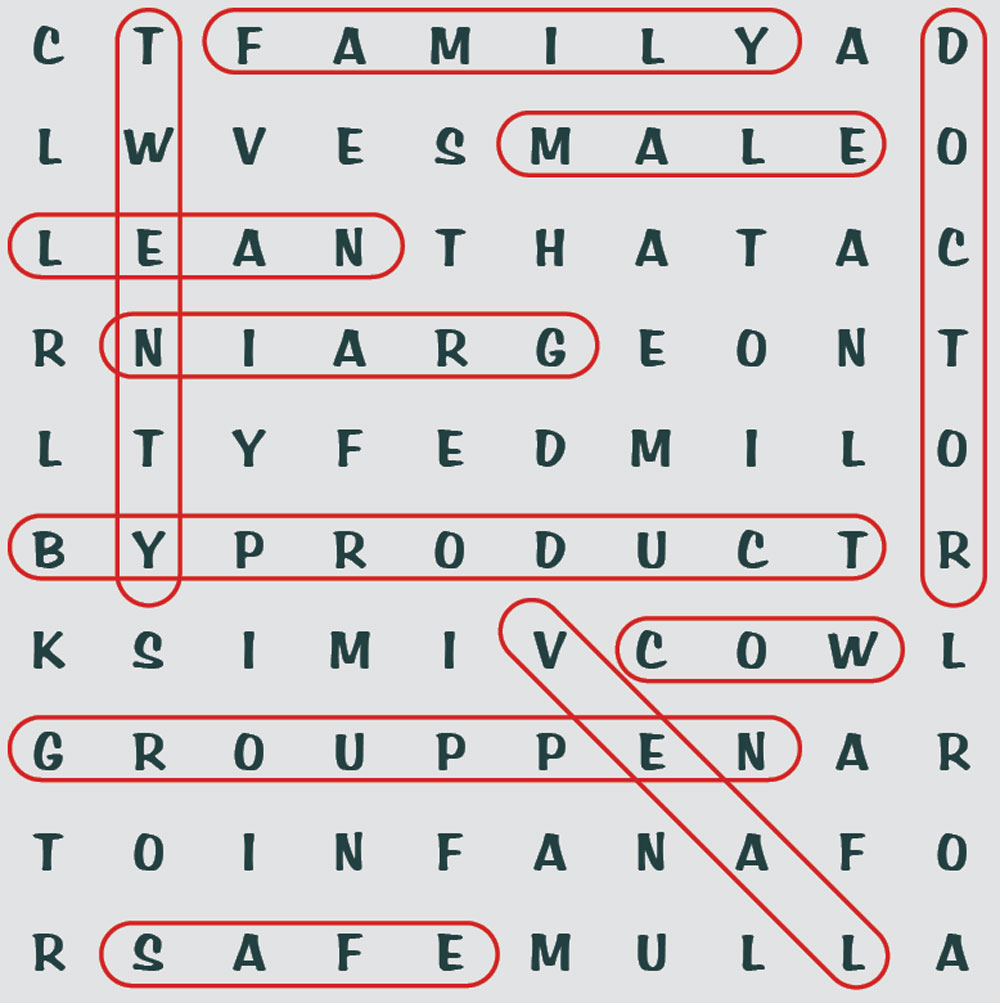
Connect the Dot
Solve the math problems to connect the dots in order. The pictures will reveal things veal calves eat everyday.
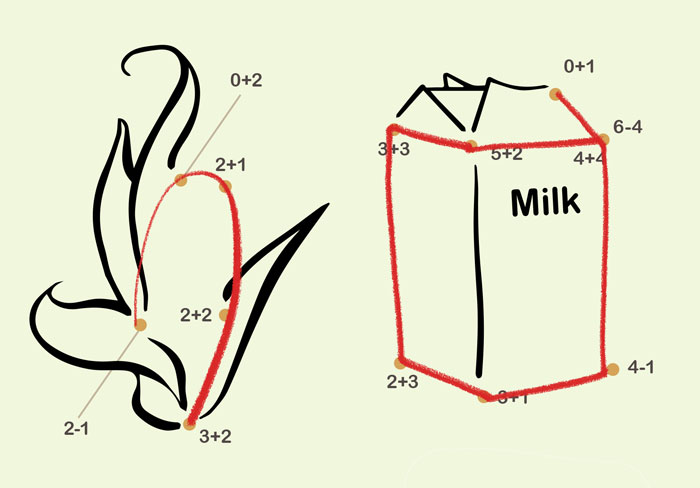
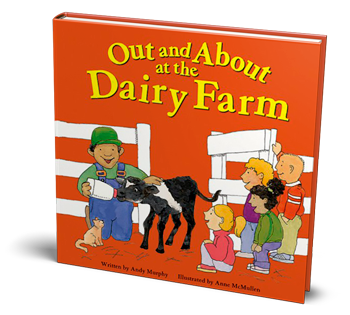
Book: Out and About at the Dairy Farm
Sponsored by Allied Milk Producers
By Andy Murphy, author and illustrator
Discusses the activities of a dairy farm, describing the machines and the process used to get the milk to our table.
Activity Answers
Dairy Round-About
To solve this riddle, start at the arrow. Then count around the wheel to every 3rd letter. Fill in the spaces in order.
Why did the cow cross the road?
To get to the udder side.
Cow Crossing
Complete the crossword using the breeds, needs and products of dairy cows.
Products:· Butter · Calcium · Cheese · Ice Cream · Milk · Yogurt | Needs:· Barn · Cow · Cud · Grain · Hay · Heifer · Pasture · Ruminant Water | Breeds:· Ayrshire · Brown Swiss · Guernsey · Holstein · Jersey · Red and White · Shorthorn |
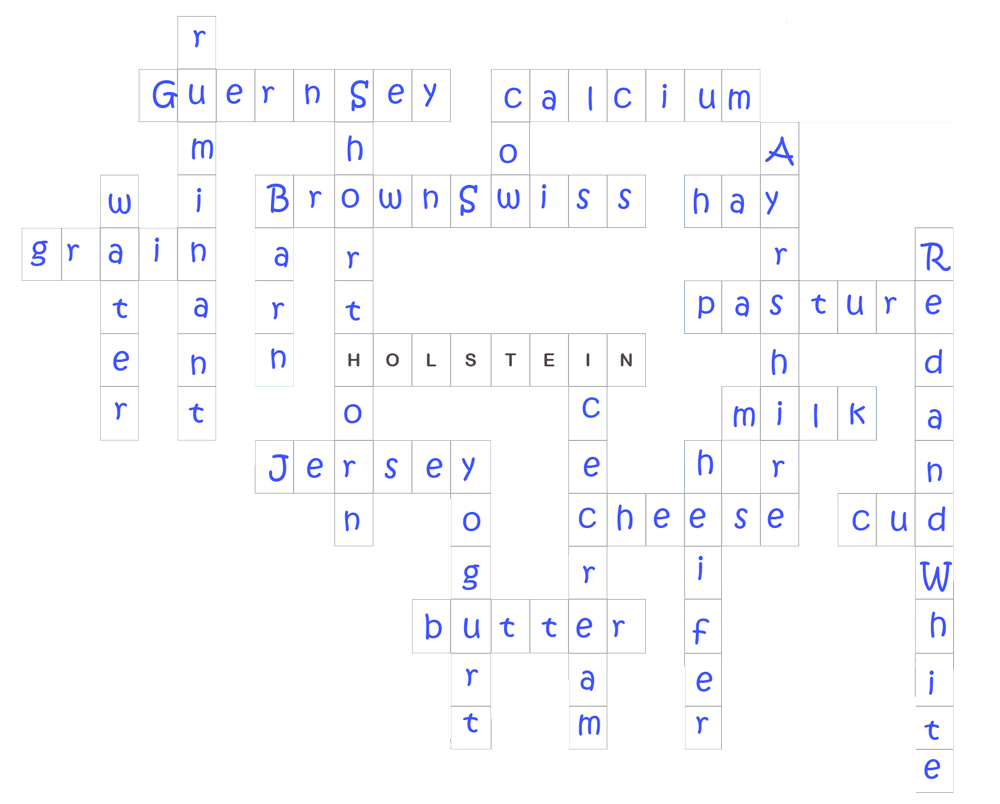
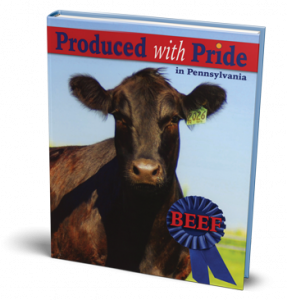
Book: Produced with Pride in Pennsylvania
Sponsored by
Pennsylvania Beef Council
By Tonya Wible (Author), Lorraine Potochney-Kobold (Book Design)
Beef is made possible by a partnership between the Pennsylvania Beef Council, the Pennsylvania Department of Agriculture and the Pennsylvania Friends of Agriculture Foundation.
Activity Answers
Cow Decoder
| Beef is a good source of _______. protein | Protein helps build strong _______. muscles | Beef is part of what group? meat | For good health, you need ____ every day. healthy exercise |
Crossword Puzzler
Across1.Best tool for measuring a burger’s temperature. THERMONITOR 2.Vitamin that contributes to healthy skin. NIACIN 3.A 3-ounce serving of beef is the size of a ___ of cards. DECK |
Down1.___ steak comes from the loin. SIRLOIN 2.Shoulder area of an animal. CHUCK 3.____help people be active and alert. NUTRIENTS 4.___ acids are protein’s building blocks.5.Added to a cooler, it helps keep food cold. AMINO |
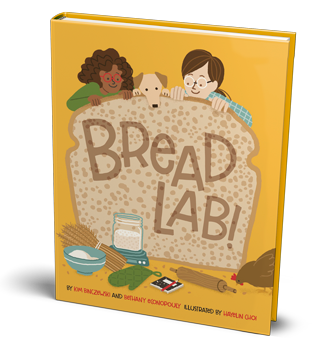
Book: Bread Lab
Sponsored by Growmark
by Kim Binczewski (Author), Bethany Econopouly (Author), Hayelin Choi (Illustrator)
It’s Saturday and Iris has to feed her many pets before Aunt Mary arrives. Iris likes to call Aunt Mary “Plant Mary” because she is a plant scientist.
Today Aunt Mary wants to experiment with making whole wheat sourdough bread from scratch! As the family kitchen transforms into a bread lab, Iris is surprised that bread needs only four ingredients―flour, water, salt and starter. She also learns about the invisible microbes that make the dough rise, and how flour comes from wheat grown by farmers. It not magic, it’s really science.
Activity Answers
Search Against the Grain
First, find the 14 words in bold green print throughout the inside of this reader in the word search puzzle below. Search Against the Grain First, find the 14 words in bold green print throughout the inside of this reader in the word search puzzle below. | Answer: FERTILIZER REPLACES NUTRIENTS USED BY PLANTS |
Grain Math
1.One bushel of corn sweetens 400 cans of soda. How many six-packs of soda can be sweetened with one acre of corn?8,667 six packs per acre of corn |
2.One bushel of soybeans can make 1,872 soy crayons. How many eight-count boxes of crayons can be made from one acre of soybeans?10,296 boxes of crayons per acre of soybeans |
3.One bushel of wheat makes 90 one-pound loaves of bread. How many loaves of bread can one acre produce?5,850 loaves of bread per acre of wheat |
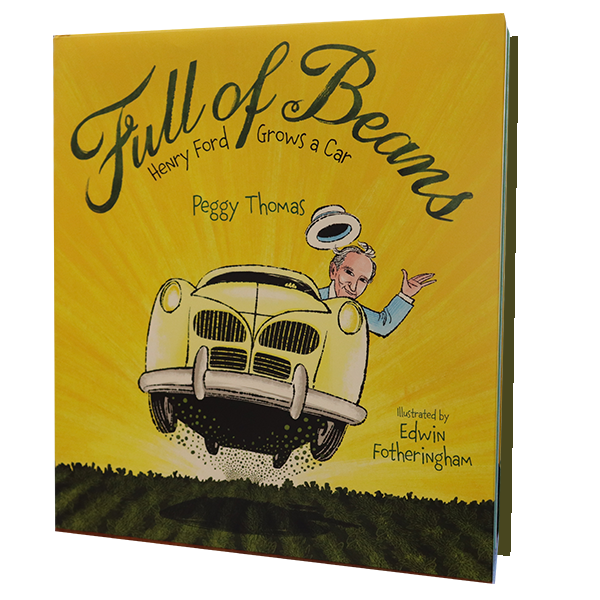
Book: Full of Beans: Henry Ford Grows a Car
Sponsored by
Pennsylvania Soybean Board
By Peggy Thomas
With a mind for ingenuity, Henry Ford looked to improve life for others. After the Great Depression struck, Ford especially wanted to support ailing farmers. For two years, Ford and his team researched ways to use farmers’ crops in his Ford Motor Company. They discovered that the soybean was the perfect answer. Soon, Ford’s cars contained many soybean plastic parts, and Ford incorporated soybeans into every part of his life. He ate soybeans, he wore clothes made of soybean fabric, and he wanted to drive soybeans, too. Award-winning author Peggy Thomas and illustrator Edwin Fotheringham explore this American icon’s little-known quest.
Activity Answers
Soy Scramble
BUBBLES
CRAFT
AUTOMOBILE
DESSERT
LIPSTICK
Counting Beans
| One bushel of soybeans weighs 60 pounds. |
KeyA =25 B =30 C =7 D =2 E =180 F =35 H =10 I =50 L =62 M=18 N=75 |
|||||||||
1. How much would ½ bushel weigh?
60 ÷ 2 = 30 |
2. How much would 3 bushels weigh?
60 x 3 = 180 |
|||||||||
| Soybeans need to be planted 2 inches apart. | ||||||||||
3. How many seeds can you plant in a row that is 100 inches long?
100 ÷ 2 = 50 |
4. What about in a row that is 50 inches long?
50 ÷ 2 = 25 |
|||||||||
5. Add the two previous rows together, how many total seeds can you plant?
50 + 25 = 75 |
||||||||||
What type of hat is a soybean’s favorite?
|
||||||||||
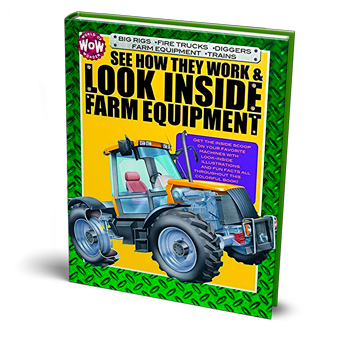
Book: See How They Work & Look Inside Farm Equipment
Sponsored by
Northeast Equipment Dealer Association, Inc.
By Johannah Gilman Paiva, Ashley Rideout, Simon Tegg, and Ross Watton
Answer Key
Ready, Set, Sequence Go....
1. Safety circuit closed | 2. Power from battery to switch | 3. Turning key switch | 4. Power to fuse in fuse box | 5. Starter powered

Mixed Signals
CSITHW – Switch | DGUONR – Ground | PERWO – Power | AYERL – Relay | IOESSRTR – Resistor | DDEIO – Diode

Electrical Matchup
1C Good Voltage Reading | 2F Fuse | 3B Completed Safety Circuit | 4A Battery | 5E Wiring Schematic | 6G Key Switch | 7D Starter
Book: Who Was Henry Ford?
Sponsored by Pennsylvania Farm Bureau
by Michael Burgan Author and Ted Hammond Illustrator
Born on a small farm in rural Michigan, Henry Ford’s humble beginnings were no match for his ambition. Ford quickly created a manufacturing dynasty, bringing affordable cars to the masses and forever changing America and the American workplace. Who Was Henry Ford? details his meteoric rise, and explains how the genius behind the assembly line and the Model T shaped modern American industry.
Activity Answers
Corn to Ethanol
Solve the math problems below each important step in ethanol production. Use the answers to correctly sequence each step.
- Step 4 – Simple sugars are fermented, then distilled to make ethanol.
15 – 9 – 2 = 4
- Step 5 – Ethanol is blended with gasoline.
18 + 27 – 17 – 23 = 5
- Step 2 – Corn is finely ground into “biomass.”
4 + 3 + 9 – 6 – 8 + = 2
- Step 1 – Corn is harvested.
38 – 17 – 20 = 1
- Step 3 – Starches are separated into simple sugars.
12 + 15 – 20 – 4 = 3
Close-Up Match
Match each close-up picture to the correct car part.
- d. steering wheel
- e. door handle
- d. tire
- f. seat
- b. tail light
- a. air vent
Car Facts
Read each statement related to cars. Decide if it is true or false.
True – There are more cars than people in the world. False – Cars have more than 40,000 parts. True – Nearly 165,000 cars are produced each day. False – The first cars could only go 10 miles per hour (mph). False – One bushel of soybeans produces one gallon of soy diesel. False – Henry Ford invented the first car.
Book: From Cocoa Beans to Chocolate
Sponsored by Pennsylvania Farm Bureau
by Bridget Heos Author and Stephanie Fizer Coleman Illustrator
This new series explains how common household foods travel from farm to factory to table. With clear process explanations and illustrations, this series answers the questions of curious and hungry kids. A child wonders where chocolate comes from and learns about cocoa farmers and how cocoa beans are harvested in West Africa and chocolate makers and how cocoa beans are made into chocolate at at factory. This illustrated narrative nonfiction book includes a map of where cocoa trees are grown, glossary, and further resources.
Activity Answers
Chocolate Math
Decode the Choco-codeDecode the message by using the letters that match each chocolate treat! From cacao seeds to chocolate treats a sweet treasure! | Color in the chocolate bar to show the listed fraction. Then write the equivalent fraction beside it. 1/3 = 4/12
8/12 = 2/3
3/4 = 9/12
1 = 12/12
|
Chocolate Scramble
Complete the details about how chocolate is made by unscrambling the letters and filling in the blanks. | |
| Cacao trees like the warmth and humidity of the tropics, but love the shade so they often grown beneath papaya and banana trees. | With proper care, most cacao trees produce about 30 pods along their trunks. When ripe, they look like orange footballs. |
| The pods are harvested by hand and then cut open with machetes to reveal 30-40 beans inside a white sticky pulp. | They are removed and covered with banana leaves and allowed to ferment for 3-7 days to enhance the cocoa flavor. The beans are then dried in the sun on platforms before being packaged into sacks and sold. |
Book: Christmas Farm
Sponsored by
Pennsylvania Farm Bureau
By Mary Lyn Ray (Author), Barry Root (Illustrator)
This lovely tale celebrates intergenerational friendship and determination, growth and nature, and the joy of the holiday season. When Wilma decides her garden needs a new beginning, she gathers string, scissors, shovels, sixty-two dozen balsam seedlings, and Parker, her five-year-old neighbor. Year after year, Wilma and Parker nurture their trees, keeping careful count of how many they plant, how many perish, and how many grow to become fine, full Christmas trees. A cozy, holiday read-aloud and a lyrical way to usher in the month of December.
Activity Answers
Ornament Code
| Use the ornament code to solve the jokes below. |
a pine-apple |
orna-mints |
|
wrappers |
Book: The Apple Orchard Riddle
Sponsored by
Pennsylvania Farm Bureau
By Margaret McNamara and G. Brian Karas
K-Gr 2-Mr. Tiffin and his class from How Many Seeds in a Pumpkin? (Random, 2007) head out on a field trip. As the students tour Farmer Hills’s orchard, they are introduced to many varieties of apples, get a chance to pick some, and watch how cider is made. Mr. Tiffin also gives them a special assignment: “Show me a little red house with no windows and no door, but with a star inside.” The children offer many guesses, but it is Tara, the daydreamer among them, who solves the riddle while thoughtfully munching on an apple core. Karas’s detailed pencil and acrylic illustrations show the youngsters engaged in lots of hands-on learning, from examining an old tractor to recording their observations in a notebook. A page of apple facts is included. This engaging story will spark fruitful curriculum discussion. -Linda Ludke, London Public Library, Ontario, Canada(c) Copyright 2013. Library Journals LLC, a wholly owned subsidiary of Media Source, Inc. No redistribution permitted. — Review From School Library Journal
Activity Answers
Apple Riddle Dropbox
| Each grid contains an apple riddle and answer. To read the riddle, move the letters up into the boxes directly above them, staying in the same column. Hint: The letters don’t go in the boxes in the order they appear! |
|
|
An Orchard Journey: From Seed to Harvest
1.Apples are part of the rose family. They can start from seeds or by joining two plants together by grafting. | 2.It can take 8-10 years for an apple tree to mature from seed to produce fruit. | 3.It takes the energy of 50 leaves to produce one apple. |
4.Apples are handpicked. The fruit furthest from the trunk ripens first. | 5.One apple tree produces about 20 bushels of apples. | 6.The farmer or orchardist will often place bee hives in the orchard to ensure the apple blossoms are pollinated. |
Apple Math
| How many pounds of apples from one tree? | 1 bushel = 42 pounds |
840 pounds20 bushels x 42 pounds per bushel | |
| How many apples in a bushel? | An average apple weighs .33 pounds |
127 apples42 lbs ber bu ÷ .33 lbs per apple | |
| How many leaves are needed to produce 20 bushels of apples on a tree? |
127,000 leaves42 lbs ber bu ÷ .33 lbs per apple |
| How many gallons of apple cider from 1 bushel of apples? | 36 apples = 1 gallon of apple cider |
3.5 gallons127 apples per bu ÷ 36 apples per gal | |
| How many apples for one pie? |
6 apples2 pounds of apples = one 9” pie |
| How many pies from one bushel? |
21 pies127 apples per bu ÷ 6 apples per pie |

